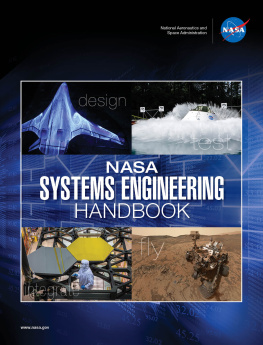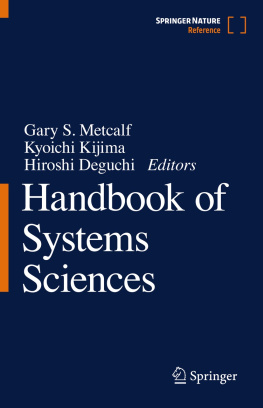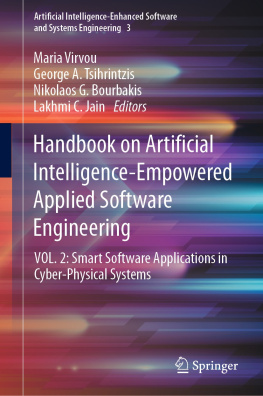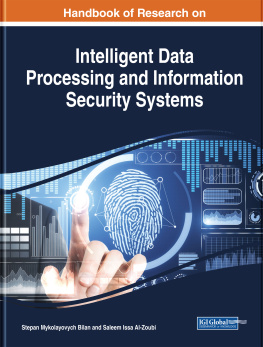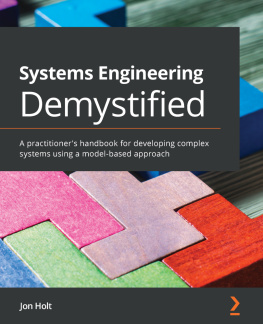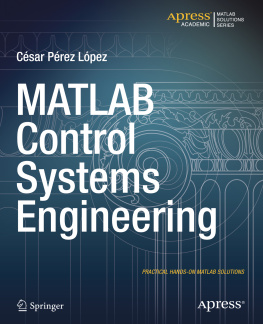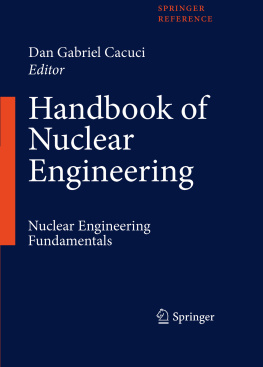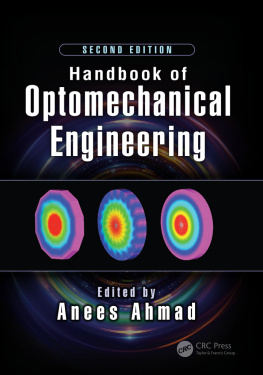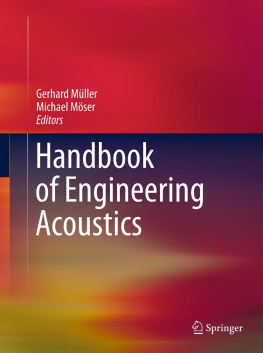Garrett Shea - Systems engineering handbook.
Here you can read online Garrett Shea - Systems engineering handbook. full text of the book (entire story) in english for free. Download pdf and epub, get meaning, cover and reviews about this ebook. City: Washington, D.C, year: 2016, publisher: National Aeronautics and Space Administration, genre: Computer. Description of the work, (preface) as well as reviews are available. Best literature library LitArk.com created for fans of good reading and offers a wide selection of genres:
Romance novel
Science fiction
Adventure
Detective
Science
History
Home and family
Prose
Art
Politics
Computer
Non-fiction
Religion
Business
Children
Humor
Choose a favorite category and find really read worthwhile books. Enjoy immersion in the world of imagination, feel the emotions of the characters or learn something new for yourself, make an fascinating discovery.
- Book:Systems engineering handbook.
- Author:
- Publisher:National Aeronautics and Space Administration
- Genre:
- Year:2016
- City:Washington, D.C
- Rating:5 / 5
- Favourites:Add to favourites
- Your mark:
- 100
- 1
- 2
- 3
- 4
- 5
Systems engineering handbook.: summary, description and annotation
We offer to read an annotation, description, summary or preface (depends on what the author of the book "Systems engineering handbook." wrote himself). If you haven't found the necessary information about the book — write in the comments, we will try to find it.
Systems engineering handbook. — read online for free the complete book (whole text) full work
Below is the text of the book, divided by pages. System saving the place of the last page read, allows you to conveniently read the book "Systems engineering handbook." online for free, without having to search again every time where you left off. Put a bookmark, and you can go to the page where you finished reading at any time.
Font size:
Interval:
Bookmark:

NASA SP-2016-6105 Rev2 supersedes SP-2007-6105 Rev 1 dated December, 2007.
Cov er photos: Top left: In this photo, engineers led by researcher Greg Gatlin have sprayed fluorescent oil on a 5.8 percent scale model of a futuristic hybrid wing body during tests in the 14- by 22-Foot Subsonic Wind Tunnel at NASAs Langley Research Center in Hampton, VA. The oil helps researchers see the flow patterns when air passes over and around the model. (NASA Langley/Preston Martin) Top right: Water impact test of a test version of the Orion spacecraft took place on August 24, 2016, at NASA Langley Research Center (NASA) Bottom left: two test mirror segments are placed onto the support structure that will hold them. (NASA/Chris Gunn) Bottom right: This self-portrait of NASAs Curiosity Mars rover shows the vehicle at the Mojave site, where its drill collected the missions second taste of Mount Sharp. (NASA/JPL-Caltech/MSSS)
Comments, questions, and suggestions regarding this document can be sent to:
Steven R. Hirshorn
Chief Engineer, Aeronautics Research Mission Directorate (ARMD)
Office of the Chief Engineer
NASA Headquarters, Room 6D37
300 E St SW
Washington, DC 20546-0001
202-358-0775
steven.r.hirshorn@nasa.gov
1.0
2.0
3.0
4.0
5.0
6.0
S ince the initial writing of NASA/SP-6105 in 1995 and the following revision (Rev 1) in 2007, systems engineering as a discipline at the National Aeronautics and Space Administration (NASA) has undergone rapid and continued evolution. Changes include using Model-Based Systems Engineering to improve development and delivery of products, and accommodating updates to NASA Procedural Requirements (NPR) 7123.1. Lessons learned on systems engineering were documented in reports such as those by the NASA Integrated Action Team (NIAT), the Columbia Accident Investigation Board (CAIB), and the follow-on Diaz Report. Other lessons learned were garnered from the robotic missions such as Genesis and the Mars Reconnaissance Orbiter as well as from mishaps from ground operations and the commercial space flight industry. Out of these reports came the NASA Office of the Chief Engineer (OCE) initiative to improve the overall Agency systems engineering infrastructure and capability for the efficient and effective engineering of NASA systems, to produce quality products, and to achieve mission success. This handbook update is a part of that OCE-sponsored Agency-wide systems engineering initiative.
In 1995, SP-6105 was initially published to bring the fundamental concepts and techniques of systems engineering to NASA personnel in a way that recognized the nature of NASA systems and the NASA environment. This revision (Rev 2) of SP-6105 maintains that original philosophy while updating the Agencys systems engineering body of knowledge, providing guidance for insight into current best Agency practices, and maintaining the alignment of the handbook with the Agencys systems engineering policy.
The update of this handbook continues the methodology of the previous revision: a top-down compatibility with higher level Agency policy and a bottom-up infusion of guidance from the NASA practitioners in the field. This approach provides the opportunity to obtain best practices from across NASA and bridge the information to the established NASA systems engineering processes and to communicate principles of good practice as well as alternative approaches rather than specify a particular way to accomplish a task. The result embodied in this handbook is a top-level implementation approach on the practice of systems engineering unique to NASA. Material used for updating this handbook has been drawn from many sources, including NPRs, Center systems engineering handbooks and processes, other Agency best practices, and external systems engineering textbooks and guides.
This handbook consists of six chapters: (1) an introduction, (2) a systems engineering fundamentals discussion, (3) the NASA program/project life cycles, (4) systems engineering processes to get from a concept to a design, (5) systems engineering processes to get from a design to a final product, and (6) crosscutting management processes in systems engineering. The chapters are supplemented by appendices that provide outlines, examples, and further information to illustrate topics in the chapters. The handbook makes extensive use of boxes and figures to define, refine, illustrate, and extend concepts in the chapters.
Finally, it should be noted that this handbook provides top-level guidance for good systems engineering practices; it is not intended in any way to be a directive.
NASA/SP-2016-6105 Rev2 supersedes SP-2007-6105 Rev 1 dated December, 2007.
The following individuals are recognized as contributing practitioners to the content of this expanded guidance:
Alexander, Michael, NASA/Langley Research Center
Allen, Martha, NASA/Marshall Space Flight Center
Baumann, Ethan, NASA/Armstrong Flight Research Center
Bixby, CJ, NASA/Armstrong Flight Research Center
Boland, Brian, NASA/Langley Research Center
Brady, Timothy, NASA/NASA Engineering and Safety Center
Bromley, Linda, NASA/Headquarters/Bromley SE Consulting
Brown, Mark, NASA/Jet Propulsion Laboratory
Brumfield, Mark, NASA/Goddard Space Flight Center
Campbell, Paul, NASA/Johnson Space Center
Carek, David, NASA/Glenn Research Center
Cox, Renee, NASA/Marshall Space Flight Center
Crable, Vicki, NASA/Glenn Research Center
Crocker, Alan, NASA/Ames Research Center
DeLoof, Richard, NASA/Glenn Research Center
Demo, Andrew/Ames Research Center
Dezfuli, Homayoon, NASA/HQ
Diehl, Roger, NASA/Jet Propulsion Laboratory
DiPietro, David, NASA/Goddard Space Flight Center
Doehne, Thomas, NASA/Glenn Research Center
Duarte, Alberto, NASA/Marshall Space Flight Center
Durham, David, NASA/Jet Propulsion Laboratory
Epps, Amy, NASA/Marshall Space Flight Center
Fashimpaur, Karen, Vantage Partners
Feikema, Douglas, NASA/Glenn Research Center
Fitts, David, NASA/Johnson Space Flight Center
Foster, Michele, NASA/Marshall Space Flight Center
Fuller, David, NASA/Glenn Research Center
Gati, Frank, NASA/Glenn Research Center
Gefert, Leon, NASA/Glenn Research Center
Ghassemieh, Shakib, NASA/Ames Research Center
Grantier, Julie, NASA/Glenn Research Center
Hack, Kurt, NASA/Glenn Research Center
Hall, Kelly, NASA/Glenn Research Center
Hamaker, Franci, NASA/Kennedy Space Center
Hange, Craig, NASA/Ames Research Center
Henry, Thad, NASA/Marshall Space Flight Center
Hill, Nancy, NASA/Marshall Space Flight Center
Hirshorn, Steven, NASA/Headquarters
Holladay, Jon, NASA/NASA Engineering and Safety Center
Hyatt, Mark, NASA/Glenn Research Center
Killebrew, Jana, NASA/Ames Research Center
Jannette, Tony, NASA/Glenn Research Center
Jenks, Kenneth, NASA/Johnson Space Center
Jones, Melissa, NASA/Jet Propulsion Laboratory
Jones, Ross, NASA/Jet Propulsion Laboratory
Killebrew, Jana, NASA/Ames Research Center
Leitner, Jesse, NASA/Goddard Space Flight Center
Lin, Chi, NASA/Jet Propulsion Laboratory
Mascia, Anne Marie, Graphic Artist
McKay, Terri, NASA/Marshall Space Flight Center
Font size:
Interval:
Bookmark:
Similar books «Systems engineering handbook.»
Look at similar books to Systems engineering handbook.. We have selected literature similar in name and meaning in the hope of providing readers with more options to find new, interesting, not yet read works.
Discussion, reviews of the book Systems engineering handbook. and just readers' own opinions. Leave your comments, write what you think about the work, its meaning or the main characters. Specify what exactly you liked and what you didn't like, and why you think so.

